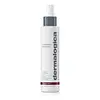What's inside
What's inside
 Key Ingredients
Key Ingredients

 Benefits
Benefits

 Concerns
Concerns

 Ingredients Side-by-side
Ingredients Side-by-side

Centella Asiatica Extract
CleansingButylene Glycol
Humectant1,2-Hexanediol
Skin ConditioningGlycerin
HumectantNiacinamide
SmoothingPanthenol
Skin ConditioningSodium Hyaluronate
HumectantHydroxypropyltrimonium Hyaluronate
Hydrolyzed Hyaluronic Acid
HumectantSodium Acetylated Hyaluronate
HumectantHyaluronic Acid
HumectantHydrolyzed Sodium Hyaluronate
Skin ConditioningSodium Hyaluronate Crosspolymer
HumectantPotassium Hyaluronate
Skin ConditioningArginine
MaskingGlycine
BufferingSerine
MaskingGlutamic Acid
HumectantAspartic Acid
MaskingLeucine
Skin ConditioningAlanine
MaskingLysine
Skin ConditioningTyrosine
MaskingPhenylalanine
MaskingProline
Skin ConditioningThreonine
Valine
MaskingIsoleucine
Skin ConditioningHistidine
HumectantCysteine
AntioxidantMethionine
Skin ConditioningPrunus Amygdalus Dulcis Oil
Skin ConditioningBeta-Glucan
Skin ConditioningAcetyl Hexapeptide-8
HumectantPolyglyceryl-10 Laurate
Skin ConditioningBetaine
HumectantWater
Skin ConditioningAcrylates/C10-30 Alkyl Acrylate Crosspolymer
Emulsion StabilisingAllantoin
Skin ConditioningCaprylyl Glycol
EmollientEthylhexylglycerin
Skin ConditioningAdenosine
Skin ConditioningDipotassium Glycyrrhizate
HumectantXanthan Gum
EmulsifyingXylitylglucoside
HumectantAnhydroxylitol
HumectantXylitol
HumectantGlucose
HumectantCentella Asiatica Extract, Butylene Glycol, 1,2-Hexanediol, Glycerin, Niacinamide, Panthenol, Sodium Hyaluronate, Hydroxypropyltrimonium Hyaluronate, Hydrolyzed Hyaluronic Acid, Sodium Acetylated Hyaluronate, Hyaluronic Acid, Hydrolyzed Sodium Hyaluronate, Sodium Hyaluronate Crosspolymer, Potassium Hyaluronate, Arginine, Glycine, Serine, Glutamic Acid, Aspartic Acid, Leucine, Alanine, Lysine, Tyrosine, Phenylalanine, Proline, Threonine, Valine, Isoleucine, Histidine, Cysteine, Methionine, Prunus Amygdalus Dulcis Oil, Beta-Glucan, Acetyl Hexapeptide-8, Polyglyceryl-10 Laurate, Betaine, Water, Acrylates/C10-30 Alkyl Acrylate Crosspolymer, Allantoin, Caprylyl Glycol, Ethylhexylglycerin, Adenosine, Dipotassium Glycyrrhizate, Xanthan Gum, Xylitylglucoside, Anhydroxylitol, Xylitol, Glucose
Water
Skin ConditioningButylene Glycol
HumectantPEG-40
HumectantHydrogenated Castor Oil
EmollientArginine/Lysine Polypeptide
Skin ConditioningAloe Barbadensis Leaf Juice
Skin ConditioningSodium Lactate
BufferingSodium PCA
HumectantSorbitol
HumectantProline
Skin ConditioningDipotassium Glycyrrhizate
HumectantMethyl Gluceth-20
HumectantCamellia Sinensis Leaf Extract
AntimicrobialSodium Carboxymethyl Beta-Glucan
CleansingLecithin
EmollientMagnesium Ascorbyl Phosphate
AntioxidantTocopherol
AntioxidantPalmitoyl Tripeptide-5
Skin ConditioningBambusa Vulgaris Leaf/Stem Extract
HumectantRose Flower Oil
MaskingPisum Sativum Extract
Skin ConditioningCupressus Sempervirens Leaf Oil
MaskingCymbopogon Martini Oil
MaskingGlucosamine Hcl
Cymbopogon Schoenanthus Oil
MaskingGlycerin
HumectantEucalyptus Globulus Leaf Oil
PerfumingDisodium EDTA
Caprylic/Capric Triglyceride
MaskingCitrus Limon Peel Extract
EmollientHelianthus Annuus Seed Oil
EmollientRosa Damascena Flower Oil
MaskingEugenia Caryophyllus Flower Oil
MaskingAniba Rosodora Wood Oil
AstringentCitrus Limon Peel Oil
MaskingPelargonium Graveolens Flower Oil
MaskingCitronellol
PerfumingEugenol
PerfumingGeraniol
PerfumingLimonene
PerfumingLinalool
PerfumingBenzyl PCA
HumectantPhenoxyethanol
PreservativeWater, Butylene Glycol, PEG-40, Hydrogenated Castor Oil, Arginine/Lysine Polypeptide, Aloe Barbadensis Leaf Juice, Sodium Lactate, Sodium PCA, Sorbitol, Proline, Dipotassium Glycyrrhizate, Methyl Gluceth-20, Camellia Sinensis Leaf Extract, Sodium Carboxymethyl Beta-Glucan, Lecithin, Magnesium Ascorbyl Phosphate, Tocopherol, Palmitoyl Tripeptide-5, Bambusa Vulgaris Leaf/Stem Extract, Rose Flower Oil, Pisum Sativum Extract, Cupressus Sempervirens Leaf Oil, Cymbopogon Martini Oil, Glucosamine Hcl, Cymbopogon Schoenanthus Oil, Glycerin, Eucalyptus Globulus Leaf Oil, Disodium EDTA, Caprylic/Capric Triglyceride, Citrus Limon Peel Extract, Helianthus Annuus Seed Oil, Rosa Damascena Flower Oil, Eugenia Caryophyllus Flower Oil, Aniba Rosodora Wood Oil, Citrus Limon Peel Oil, Pelargonium Graveolens Flower Oil, Citronellol, Eugenol, Geraniol, Limonene, Linalool, Benzyl PCA, Phenoxyethanol
 Reviews
Reviews

Ingredients Explained
These ingredients are found in both products.
Ingredients higher up in an ingredient list are typically present in a larger amount.
Butylene Glycol (or BG) is used within cosmetic products for a few different reasons:
Overall, Butylene Glycol is a safe and well-rounded ingredient that works well with other ingredients.
Though this ingredient works well with most skin types, some people with sensitive skin may experience a reaction such as allergic rashes, closed comedones, or itchiness.
Learn more about Butylene GlycolDipotassium Glycyrrhizate comes from licorice root.
Extracts of licorice have demonstrated to have antibacterial, anti‐inflammatory, antiviral, antioxidant properties.
One component, glabridin, has extra potent antioxidant and soothing properties. It has also been found to block pigmentation from UVB rays in guinea pigs.
Licorice Root also contains a flavonoid. Flavonoids are a natural substance from in plants. Flavonoids also have antioxidant properties.
Another component, glycyrrhizin, has been found to have anti-inflammatory and antimicrobial benefits. This may make licorice root extract effective at treating acne. However, more research is needed to support this.
Liquiritin is one of the flavone compounds found in licorice. It has been found to help lighten skin by preventing tyrosinase from reacting with tyrosine. When the two react, protein is converted to melanin. Melanin is the substance in your body that gives your features pigmentation.
Licorice root is native to Southern Europe and Asia. It has been used in traditional Chinese medicine to help with respiratory issues.
Learn more about Dipotassium GlycyrrhizateGlycerin is already naturally found in your skin. It helps moisturize and protect your skin.
A study from 2016 found glycerin to be more effective as a humectant than AHAs and hyaluronic acid.
As a humectant, it helps the skin stay hydrated by pulling moisture to your skin. The low molecular weight of glycerin allows it to pull moisture into the deeper layers of your skin.
Hydrated skin improves your skin barrier; Your skin barrier helps protect against irritants and bacteria.
Glycerin has also been found to have antimicrobial and antiviral properties. Due to these properties, glycerin is often used in wound and burn treatments.
In cosmetics, glycerin is usually derived from plants such as soybean or palm. However, it can also be sourced from animals, such as tallow or animal fat.
This ingredient is organic, colorless, odorless, and non-toxic.
Glycerin is the name for this ingredient in American English. British English uses Glycerol/Glycerine.
Learn more about GlycerinProline is an amino-acid. It helps moisturize the skin and plays an important role in creating proteins.
Our skin uses proline as one of the building blocks for producing collagen.
In medicine, proline is used as an osmoprotectant. This means it helps prevent oxidative degradation in other drugs.
Our bodies are able to produce proline naturally, but certain conditions may inhibit this production. In that case, proline can be obtained from eating egg whites, soy protein, dairy products, asparagus, mushrooms, and seaweed.
Learn more about ProlineWater. It's the most common cosmetic ingredient of all. You'll usually see it at the top of ingredient lists, meaning that it makes up the largest part of the product.
So why is it so popular? Water most often acts as a solvent - this means that it helps dissolve other ingredients into the formulation.
You'll also recognize water as that liquid we all need to stay alive. If you see this, drink a glass of water. Stay hydrated!
Learn more about Water